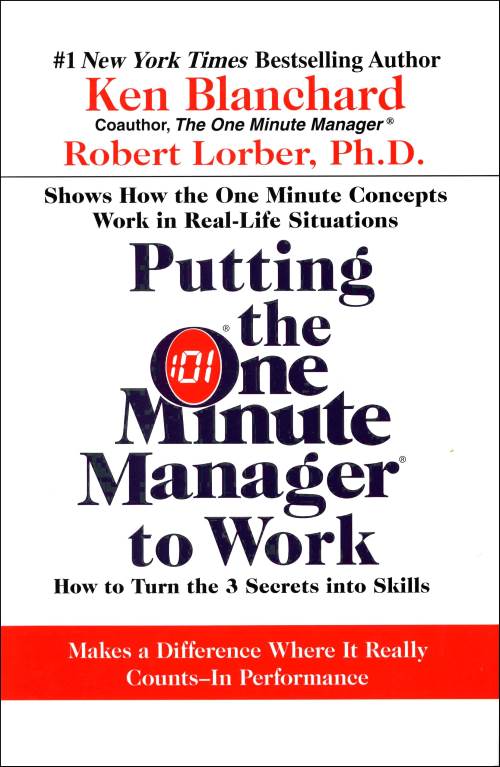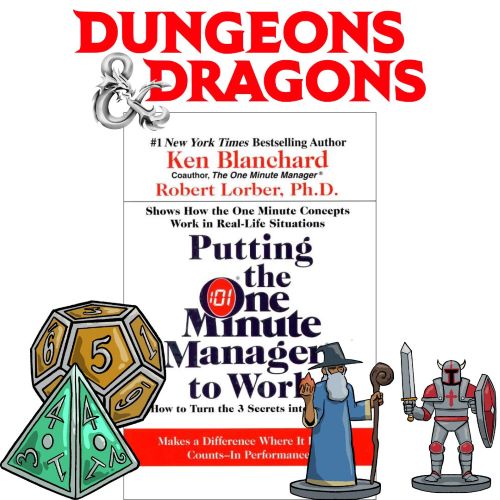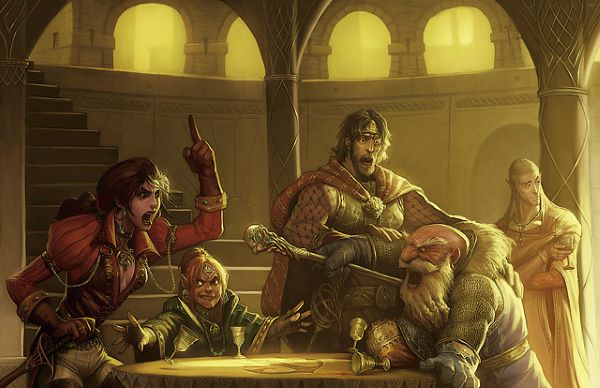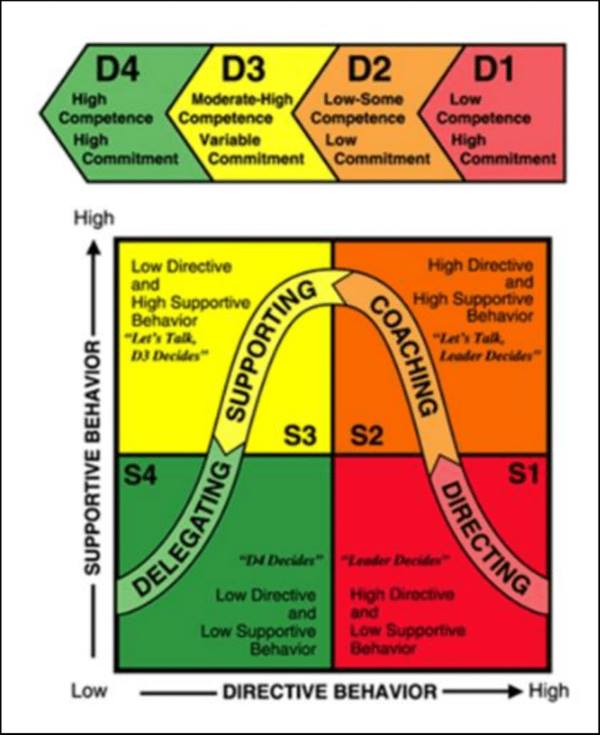Many years ago I was promoted to Team Leader and put through our company’s future leader program. Part of the syllabus revolved around the One Minute Manager by Kenneth Blanchard and Spencer Johnson. At the time I got a lot of value from this thin tome and it stood me in good stead as my leadership career progressed. While thinking about this recently I wondered if the lessons can port over into the world of roleplaying games. Having run through a similar exercise with the Culture Code to good feedback, I thought this worthwhile pursuing. So, could you purposefully use the tenets of the One Minute Manager in game to enhance your leadership skill in the real world? Let’s find out.
The One Minute Manager: A Brief Overview
For those unfamiliar, The One Minute Manager, originally published in 1982, is a classic in leadership literature. Through the conceit of a short business parable it introduces three key principles for effective management:
- One Minute Goals: Setting clear, concise goals.
- One Minute Praisings: Providing immediate and specific praise.
- One Minute Redirects: Offering quick and constructive feedback on performance.
These principles are designed to improve efficiency and motivation in any team setting. TO my mind this includes a D&D campaign. Let’s explore this further.
Applying One Minute Management to Your D&D Game
1. One Minute Goals: Setting Clear Objectives
In D&D, clear objectives are crucial for maintaining the focus and momentum of the game. As a Dungeon Master (DM) or a party leader, you can use the One Minute Goals principle to set and communicate objectives for your sessions.
- For Dungeon Masters: At the beginning of each session, outline the key goals for the party. For example, “Today, you’ll need to explore the abandoned castle and find the hidden chamber.” This ensures everyone knows the purpose of the adventure and can align their actions accordingly. If necessary, add details from previous sessions so that the players understand why this goal is important.
- For Players: When strategizing with your party, propose clear goals for your character’s actions and the group’s overall mission. For example, “Let’s focus on gathering information about the enemy’s weaknesses this session.” This clarity helps in making tactical decisions and improving group cohesion.
2. One Minute Praisings: Recognizing Achievements
In game, recognition and encouragement can greatly enhance player engagement and satisfaction. Applying the One Minute Praisings concept can lead to a more motivated and enthusiastic group.
- For Dungeon Masters: Acknowledge players’ creative problem-solving or role-playing efforts. For example, “I loved how you cleverly used your spell to bypass the trap. Great thinking!” This immediate and specific praise boosts morale and encourages players to continue being inventive.
- For Players: When your fellow adventurers contribute meaningfully to the story or overcome a challenge, recognize their efforts. For instance, “Your character’s bravery in battle was inspiring. You really saved us there!” This fosters a positive group dynamic and strengthens team bonds. This can also be done effectively post game. Reminiscing about a fellow players spotlight moments strengthens the team and gets everyone excited about the next session.

3. One Minute Redirects: Providing Constructive Feedback
Effective feedback is vital in both leadership and gameplay. The One Minute Redirects approach helps in delivering constructive feedback in a way that is respectful and productive.
- For Dungeon Masters: If a player’s actions disrupt the game or cause confusion, address it quickly and constructively. For example, “I noticed you missed a few rules in the last encounter. Let’s review them together so we can keep the game flowing smoothly.” This ensures that issues are resolved promptly and do not detract from the overall enjoyment of the game.
- For Players: If you need to address a concern with a fellow player’s behavior, do so in a constructive manner. For example, “I felt that some of the decisions made in combat slowed down our progress. Can we discuss how to streamline our actions?” This approach promotes a collaborative atmosphere and helps the group to improve collectively.
Benefits of Integrating One Minute Management into D&D
Combining the One Minute Manager principles into your D&D games can provide several benefits:
- Enhanced Communication: Clear goals and immediate feedback foster better communication among players and between the DM and the party.
- Increased Engagement: Recognizing and praising achievements boosts enthusiasm and investment in the game.
- Improved Team Dynamics: Constructive feedback helps resolve issues quickly and keeps the group focused on collaborative problem-solving.
Final Thoughts on The One Minute Manager
Integrating these management principles into your D&D sessions takes practice. Reflect on how the application of these techniques impacts your gameplay and leadership skills. Consider discussing with your group what worked well and what could be improved. This continuous feedback loop will help you refine your approach and become a more effective leader both in-game and in real life. Using these experiences in game allows you to reflect on how you might apply them in the real world. Experimenting in game is the perfect low risk environment to try out these skills. Why not give it a go? Your party—and your leadership skills—will thank you!



